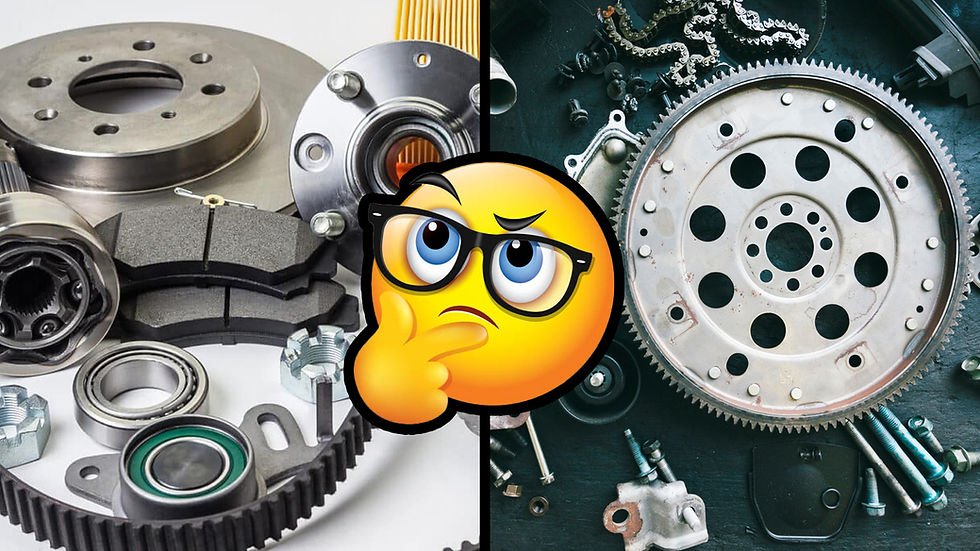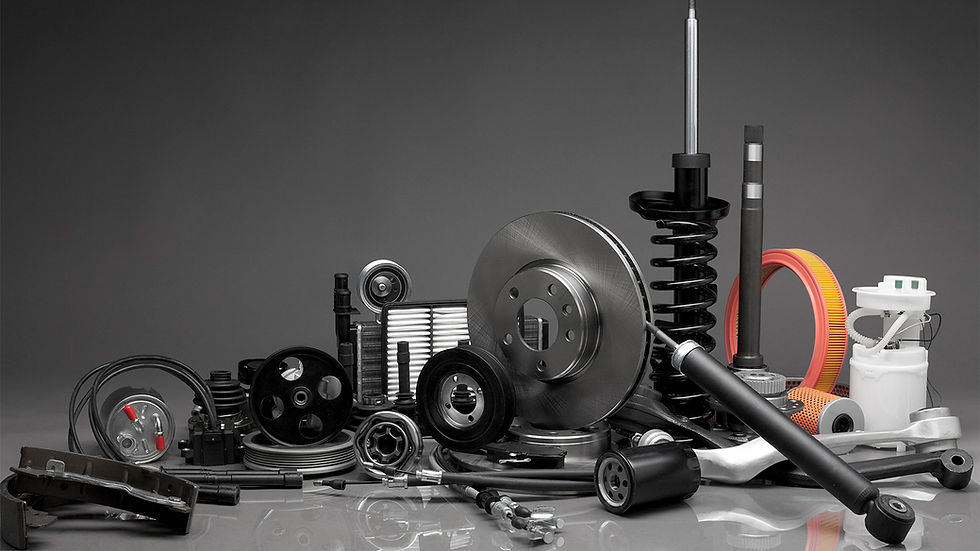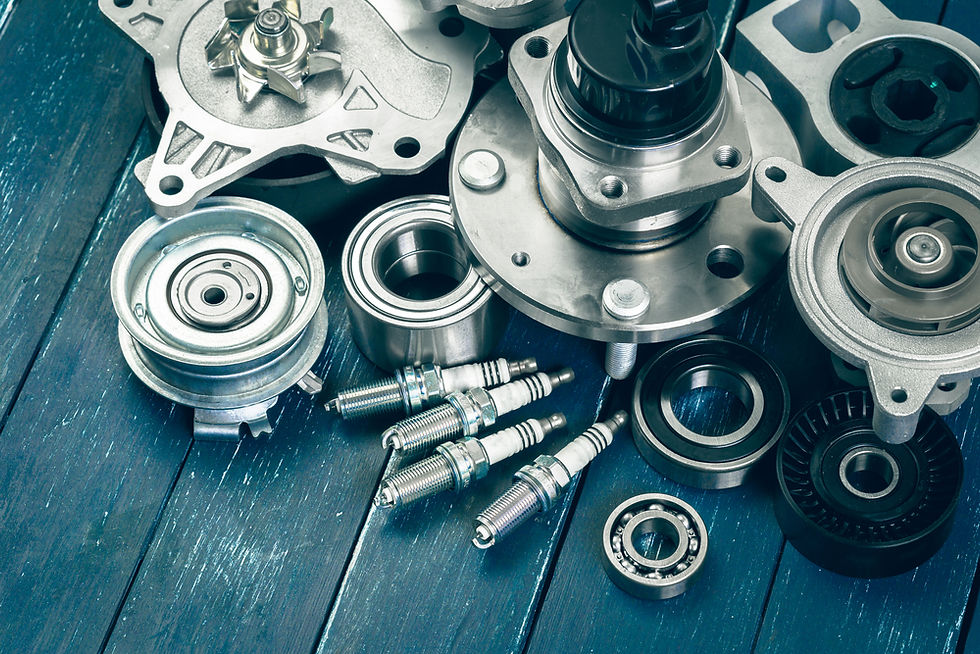OEM vs. Aftermarket Hydraulic Parts: Which One Should You Choose?
- PSI Hydraulics
- Mar 8
- 4 min read

Hydraulic systems are the lifeline of many industries, powering heavy machinery, manufacturing equipment, and industrial automation. When a component fails or needs replacement, choosing the right part is critical to maintaining performance and avoiding costly downtime. One of the biggest decisions businesses face is whether to use OEM (Original Equipment Manufacturer) parts or aftermarket hydraulic parts.
Each option has its advantages and drawbacks, and the right choice depends on factors like cost, quality, availability, and application requirements. Understanding the key differences between OEM and aftermarket hydraulic parts can help businesses make informed decisions that balance performance and budget.
What Are OEM Hydraulic Parts?
OEM hydraulic parts are components manufactured by the original company that designed and produced the equipment. These parts are specifically engineered to meet the exact specifications of the original machinery, ensuring a precise fit and seamless compatibility.
Because OEM parts are made by the same manufacturer, they are designed with the same materials, tolerances, and performance standards as the original components. This guarantees consistency and reliability, making them a preferred choice for many industries that prioritize long-term performance.
Advantages of OEM Hydraulic Parts
One of the biggest advantages of OEM parts is guaranteed compatibility. Since these parts are designed by the original manufacturer, they fit perfectly without modifications, reducing installation time and the risk of malfunction.
OEM parts are also known for high quality and reliability. They go through rigorous testing and meet industry standards, ensuring durability and long-term performance. This makes them ideal for applications where safety and precision are critical, such as aerospace, construction, and industrial automation.
Another benefit is warranty protection. Many OEM parts come with a manufacturer-backed warranty, offering peace of mind and protection against defects.
Disadvantages of OEM Hydraulic Parts
One of the main drawbacks of OEM parts is higher cost. Since they are made by the original manufacturer and go through extensive testing, they often come with a premium price tag.
Availability can also be an issue. If a manufacturer discontinues a product line, finding OEM parts for older equipment can be challenging. Lead times for OEM parts may also be longer, especially if they need to be ordered directly from the manufacturer.

What Are Aftermarket Hydraulic Parts?
Aftermarket hydraulic parts are components produced by third-party manufacturers that are designed to function as replacements for OEM parts. These parts are often created to match or exceed the specifications of the original components but may vary in design, materials, or performance.
Many aftermarket manufacturers specialize in producing hydraulic parts at a lower cost while maintaining quality standards. Some aftermarket parts are direct replacements, while others may offer enhanced performance features.
Advantages of Aftermarket Hydraulic Parts
One of the biggest benefits of aftermarket parts is cost savings. They are typically more affordable than OEM components, making them an attractive option for businesses looking to reduce maintenance costs.
Availability is another advantage. Aftermarket parts are often more readily available than OEM parts, especially for older equipment or discontinued models. Many third-party manufacturers offer a wide range of hydraulic components, ensuring quick access to replacements.
Some aftermarket manufacturers go beyond OEM specifications by offering improved performance. For example, they may use advanced materials or enhanced designs to increase durability, efficiency, or resistance to wear.
Disadvantages of Aftermarket Hydraulic Parts
While aftermarket parts can offer savings, quality can vary. Not all third-party manufacturers adhere to the same strict standards as OEMs, so some aftermarket parts may not match the durability or precision of original components.
Another potential drawback is compatibility issues. Some aftermarket parts may require modifications to fit correctly, which can increase installation time and labor costs. If a part is not an exact match, it could lead to system inefficiencies or premature failure.
Aftermarket parts may not come with a warranty or may have limited coverage compared to OEM components. This can be a concern for businesses that rely on long-term reliability.
Key Factors to Consider When Choosing Between OEM and Aftermarket Parts
When deciding between OEM and aftermarket hydraulic parts, businesses should evaluate several factors to determine the best fit for their needs.
Application Requirements
For industries where precision and safety are paramount, such as aerospace, medical equipment, or heavy construction, OEM parts may be the better choice. If a hydraulic system operates under extreme conditions, the reliability of OEM components can provide added security.
For less demanding applications where minor variations in part specifications are acceptable, high-quality aftermarket parts can be a cost-effective solution.
Budget Considerations
If cost is a primary concern, aftermarket parts can provide significant savings. However, businesses should balance initial savings with potential long-term costs. If a lower-quality part fails sooner than expected, the cost of additional replacements and labor may outweigh the savings.
Lead Time and Availability
If a machine needs immediate repairs and an OEM part has a long lead time, an aftermarket alternative may be the best option to minimize downtime. In cases where time is not a factor, waiting for an OEM component could be beneficial for long-term system integrity.
Warranty and Support
OEM parts often come with better warranty coverage, which can be important for businesses that prioritize risk reduction. Some reputable aftermarket manufacturers also offer warranties, but coverage terms may differ.

Making the Right Choice for Your Hydraulic System
There is no one-size-fits-all answer when it comes to choosing between OEM and aftermarket hydraulic parts. The right decision depends on specific business needs, equipment requirements, and budget constraints.
For businesses that require guaranteed fit, long-term reliability, and manufacturer-backed warranties, OEM parts are the safest option. However, for those looking to reduce costs without sacrificing performance, high-quality aftermarket parts can be a viable alternative.
Partnering with a trusted hydraulic solutions provider is essential for making the best choice. PSI Hydraulics offers expert guidance on selecting the right hydraulic components, ensuring that businesses get the best balance of quality, cost, and performance.
Contact PSI Hydraulics today to discuss your hydraulic parts needs and explore the best solutions for your equipment.
.png)
Comentarios